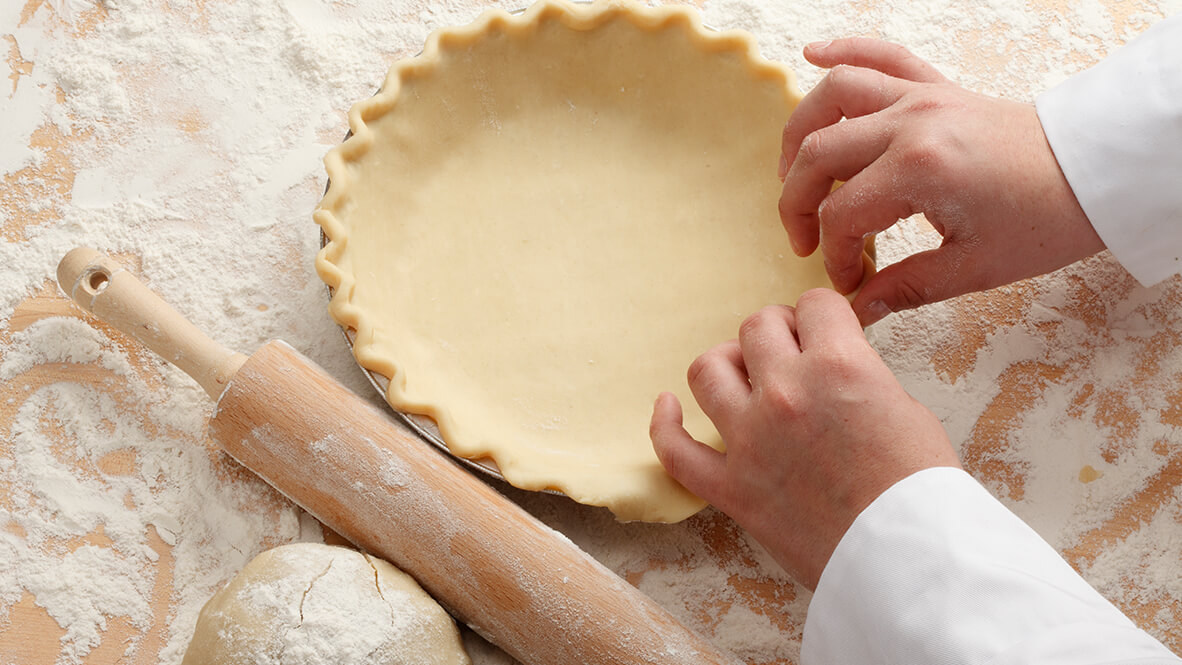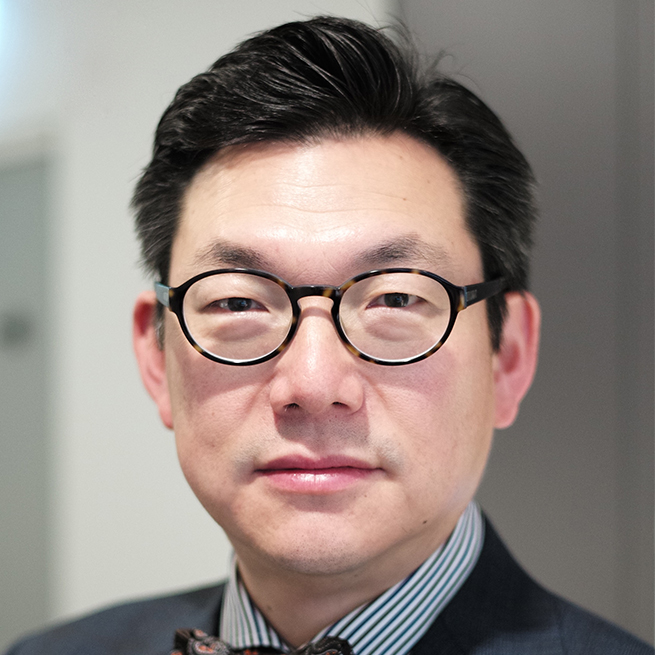With a magazine called PIE, it’s clear we have a love for sweet treats. Now, of course, PIE and pie are quite different: one is an acronym for Posterior Segment, Innovation and Enlightenment . . . and the other is a delicious baked dessert. Most people (bakers and ophthalmologists alike) would agree that the two couldn’t possibly have much in common.
However, we (at PIE) are not most people – and we immediately saw a parallel between the posterior segment and pie: In surgery, as in baking, a list of materials is required and a set of guidelines is followed; precision is critical, and some cases (or recipes) can be more complex than others. Complicated vitreoretinal cases are challenging, even to the most skilled surgeons, and follow their own intricate recipe. Below, four vitreoretinal surgeons from Asia-Pacific share their recipes to resolve complicated cases in the posterior segment.
That doesn’t belong in the pie
Removing IOFBs
This complex case involves an unfortunate 42-year-old male, who had a metal foreign body (FB) enter his right eye and lodge in his inferior retina. PIE-appointed baker and consultant vitreoretinal surgeon Dr. Kenneth Fong treated the patient, who presented with a self-sealing corneal laceration, traumatic cataract and localized retinal detachment around the foreign body impact site.
To remove the intraocular foreign body (IOFB), Dr. Fong performed a 20-gauge pars plana vitrectomy. During the procedure, a posterior vitreous detachment was induced by suction over the optic disc (vacuum 250 mm Hg, infusion pressure 25 mm Hg), which resulted in a complete vitrectomy.
“To remove the metal IOFB, I used 19-gauge foreign body forceps and removed it via the enlarged pars plana incision,” he explained. The IOFB measured 6mm in length. “I had a 19-gauge intraocular magnet on standby in case it was difficult to remove the IOFB, but I didn’t need to use it as the IOFB forceps were adequate,” said Dr. Fong.
The next step in the recipe called for endolaser, which was performed around the FB impact site. He then inserted 1000cs of silicone oil and sutured the sclera and conjunctiva with 7/0 Vicryl.
“Silicone oil insertion for any case of IOFB embedded in the retina helps prevent retinal detachment and allows for a good view of the retina postoperatively compared with gas,” shared Dr. Fong.
Following the surgery, the patient was given topical Prednisolone Acetate-Gatifloxacin eye drops, to be used every three for three weeks, as well as oral moxifloxacin (400mg/day for five days) to prevent endophthalmitis.
Just like pies need to set before they’re served, some vitreoretinal cases need time between steps. In this case Dr. Fong says: “It’s not necessary to remove the cataract in the first surgery, as it may induce further inflammation.” Therefore, three months following the initial procedure, the patient underwent phacoemulsification for the traumatic cataract and the silicone oil was removed.
“Early removal of silicone oil combined with cataract surgery allows for early recovery of vision, as well as preventing any complications from the oil,” added Dr. Fong. “The retina was attached postoperatively and his best corrected visual acuity was 20/50.”
When pies fall apart
Repairing retinal detachments
In another complex recipe, Dr. Sherman Valero, vitreoretinal consultant at The Medical City, Philippines, details a case involving a 64-year-old male who presented with an acute off-macula retinal detachment, with the right eye showing multiple breaks positioned at 3 and 11 o’clock.
In ophthalmology, as in baking, things can go awry. In this case, Dr. Valero scheduled the patient for an immediate pars plana vitrectomy (PPV), but the patient’s anxiety got the best of him, and he didn’t show up for the surgery. A month later the patient returned, complaining of sudden pain in the right eye that had begun the previous week. “The exam showed a soft eye with choroidal effusion, and almost complete apposition of the retina in posterior pole (kissing choroidals),” said Dr. Valero. The patient was scheduled for surgery for the following day.
Preoperatively, Dr. Valero decided to place the infusion cannula in the small free space at 12 o’clock and to perform the sclerostomies inferonasally and inferotemporally to drain external fluid prior to vitrectomy.
“However, because the eye was soft, the G25 infusion trocar would not penetrate into the vitreous cavity,” said Dr. Valero, adding that repeated attempts at inflating the eye with balanced salt solution (BSS) through a limbal site were performed, but eye would not stay firm enough.
At this point, he notes two main ingredients were needed: an anterior chamber (AC) maintainer – and patience.
“The AC maintainer was inserted through a limbal stab incision,” said Dr. Valero. This allowed for infusion through the AC, while maintaining the eye rigidity required for the surgeon to perform the sclerotomies.
“There was moderate drainage of choroidal effusion, which created enough space for the trocars and instruments to be placed in the vitreous cavity safely,” he added. The vitrectomy was then performed and the subretinal fluid was drained through breaks.
“The retina was successfully reattached, but there was a note of residual choroidal effusion infratemporally . . . this residual effusion was left behind,” said Dr. Valero, adding that the breaks were lasered and silicone oil was placed in the cavity.
On day one post-op, the retina was attached, but there was still some inferior choroidal effusion. By day seven, the choroidals were resolved and the inferior retina remained attached, however, the oil level dropped to 80 percent. Dr. Valero says the patient’s final best corrected visual acuity (BCVA) was 20/100, and silicone oil removal is planned for the future.
While the patient’s initial retinal breaks were alarming enough, waiting a month to have surgery caused unnecessary complications and risks. Therefore, Dr. Valero counsels: “Make sure that patients are well informed of details of surgery, including possible complications if it not done within a particular time frame.”
Any way you slice it
“A stab in the eye”
Sometimes, complications during surgery can result in a complex recipe for patient recovery – which is what happened to Dr. Andrew Chang, head of the Retinal Unit at the Sydney Eye Hospital in Australia. In this case, the patient had an accidental globe perforation by a peribulbar anesthetic needle – or “a stab in the eye.”
The patient, a 71-year-old high myope, underwent an uneventful cataract surgery in the morning. However, when the eye pad was removed that afternoon, the patient’s vision was very blurred. Dr. Chang examined the eye and found that visual acuity (VA) was reduced to hand movements only.
“Through the vitreous hemorrhage, a superior retinal tear and detachment was noted,” said Dr. Chang. “It was suspected that the patient had a globe perforation by the anesthetic needle.”
According to Dr. Chang, these cases are often diagnosed the next day after the eye pad is removed. “The vision is unexpectedly poor, and a vitreous hemorrhage is often present,” he said, adding that accidental globe perforation is more common in large and unusually shaped myopic eyes with staphylomata.
Unfortunately, with this complication, the prognosis is often guarded as various problems can arise: “With the initial injury, the needle may damage the macula, cause multiple tears and detachment, and can result in subretinal or choroidal hemorrhage,” said Dr. Chang. “Additionally, anesthetic agent may be injected inadvertently into the eye itself. These cases often develop proliferative retinal scarring resulting in retinal re-detachment and vision loss.”
Therefore, it’s imperative to make the correct preoperative diagnosis. “An ultrasound of the globe will show the extent of damage – like a retinal detachment or subretinal or choroidal hemorrhage,” he explained. “It will show the shape and size of the globe.” It’s also vital to consider the type of anesthesia to use for the vitrectomy: “If the globe is large due to myopia, then general anesthesia or sub-Tenon’s local anesthesia is considered,” said Dr. Chang. In addition, he advises to check the intraocular pressure (IOP) – if it’s low, it could indicate a large scleral wound, which could require external suture repair.
Once the preoperative preparation was complete, he immediately took the patient to the operating room. During surgery, Dr. Chang confirmed that the needle had passed through the interior of the globe upward, which caused a tear of the superior retina and ultimately a detachment.
This complex ‘pie’ called for various ingredients and cooking methods (or surgical techniques). He performed a three-port PPV, separated the vitreous hyaloid and relieved traction from around the perforating wounds. Dr. Chang notes that good illumination is key – and surgeons should take care when placing the infusion line, as there could be a choroidal thickening.
He continued with some expert baking tips: “Heavy liquid perfluorocarbon (PCFL) is useful for stability and as tamponade in the retina.” To treat the entry and exit wounds, as well as other tears, laser photocoagulation was applied. “Silicone oil tamponade is often required as these eyes may be at high risk of proliferative vitreoretinopathy (PVR) and re-detachment of the retina,” explained Dr. Chang.
Postoperatively, it’s critical to closely monitor the patient for complications like retinal scarring, which could result in a re-detachment of the retina or an epiretinal membrane formation.
In this case, the retina detached again and required further surgery.
“Ultimately the retina was stabilized with the use of silicone oil tamponade,” he added.
A perfectly baked crust
Closing macular holes
If baking a pie takes some know-how, then closing macular holes takes a lot. This complex recipe comes from Dr. Vaibhav Sethi, a vitreoretinal consultant at Arunodaya Deseret Eye Hospital, Gurgaon, Haryana, India.
His pie recipe begins with a 55-year-old patient who complained of decreased vision and metamorphopsia. After consultation, the patient was diagnosed with myopic maculopathy with macular schisis and a full thickness macular hole (more than 400 microns wide), associated with posterior staphyloma. The patient’s BCVA was 20/200, with a myopia of -22D. Preoperatively, the patient underwent counseling and Dr. Sethi explained the guarded visual prognosis. He was prescribed antibiotic eyedrops.
Of course, a complex diagnosis begets a complicated surgery. Dr. Sethi began by making three ports and placing a chandelier light system at 11 and 1 o’clock. Then he performed an anterior and core vitrectomy. Triamcinolone was injected to stain the posterior hyaloid.
Dr. Sethi said that posterior vitreous detachment (PVD) was thought to be induced (with great difficulty). “Restaining with tricot revealed vitreoschisis and finally, PVD induced from the edge of the staphyloma,” he explained.
He stained the internal limiting membrane (ILM) with blue under air but says both the stain quality and contrast were very poor. As there was extensive chorioretinal degeneration present, he re-stained for a longer duration (two minutes) and minimal staining was achieved.
“It was difficult to reach and grasp the internal limiting membrane with ILM forceps due to the extremely long axial length and posterior staphyloma,” said Dr. Sethi. So, he removed one cannula and slightly lowered the IOP to reach further into the posterior staphyloma.
“The ILM forceps just about reached the surface and the pinch and peel maneuver was then done,” explained Dr. Sethi. “The problem is this piecemeal ILM removal, and not being sure about the depth of pinch due to posterior staphyloma and myopic degeneration.”
He then used a finesse loop to scrape the ILM tissue up to the hole’s edge as much as possible. Following that, Dr. Sethi employed the inverted ILM flap technique to place the ILM tissue attached to the hole’s edge over the hole’s surface.
“[I then performed a] fluid-air exchange . . . but the ILM flap became amputated and dislodged,” he said. Dr. Sethi placed PCFL on the hole in the posterior staphyloma and replaced the dislodged ILM film over the hole under the PFCL bubble using ILM forceps. “A cutter tip was used to stabilize the ILM flap over the hole and 12 percent C3F8 gas was injected,” he added.
In the final steps, the periphery was checked and Dr. Sethi removed the chandelier & other cannulae. Postoperatively, the patient did well, with BCVA improving to 20/80. At week one following surgery, the hole closed.
Like expert bakers creating the perfect pie, cases like these involve multiple ingredients and a high level of expertise. “Doing such cases is a challenge,” said Dr. Sethi. “They require all available armamentarium – and lots of patience.”
Vitreoretinal surgery is complex and even more so in these complicated cases, leaving the surgeon to rely on expertise, intuition and the counsel of others. Recipes like those shared above, and first-hand knowledge and experience from other surgeons, are key ingredients to treating challenging posterior segment conditions. And we think that for ophthalmologists (and bakers alike), the most challenging cases (or pie recipes) are the most rewarding.
~ Baker’s Tips ~
“Silicone oil insertion for any case of IOFB embedded in the retina helps prevent retinal detachment and allows for a good view of the retina postoperatively compared with gas.”
– Dr. Kenneth Fong
“Make sure that patients are well informed of details of surgery, including possible complications if it not done within a particular time frame.”
– Dr. Sherman Valero
“Heavy liquid perfluorocarbon (PCFL) is useful for stability and as tamponade in the retina.”
– Dr. Andrew Chang
“Doing such cases is a challenge… They require all available armamentarium – and lots of patience.”
– Dr. Vaibhav Sethi









Interesting and a well documented article on ILM peeling by Dr vaibhav Sethi